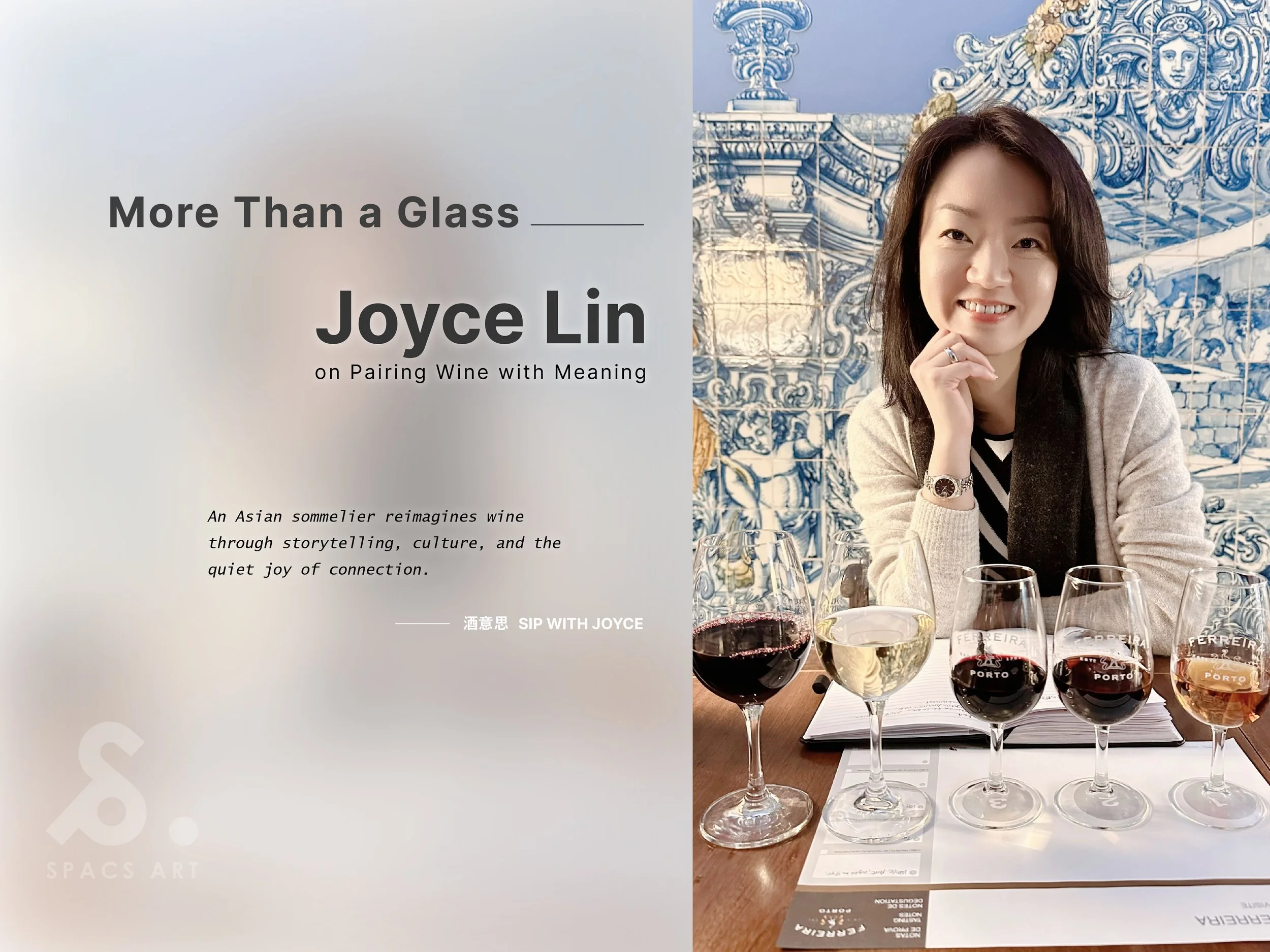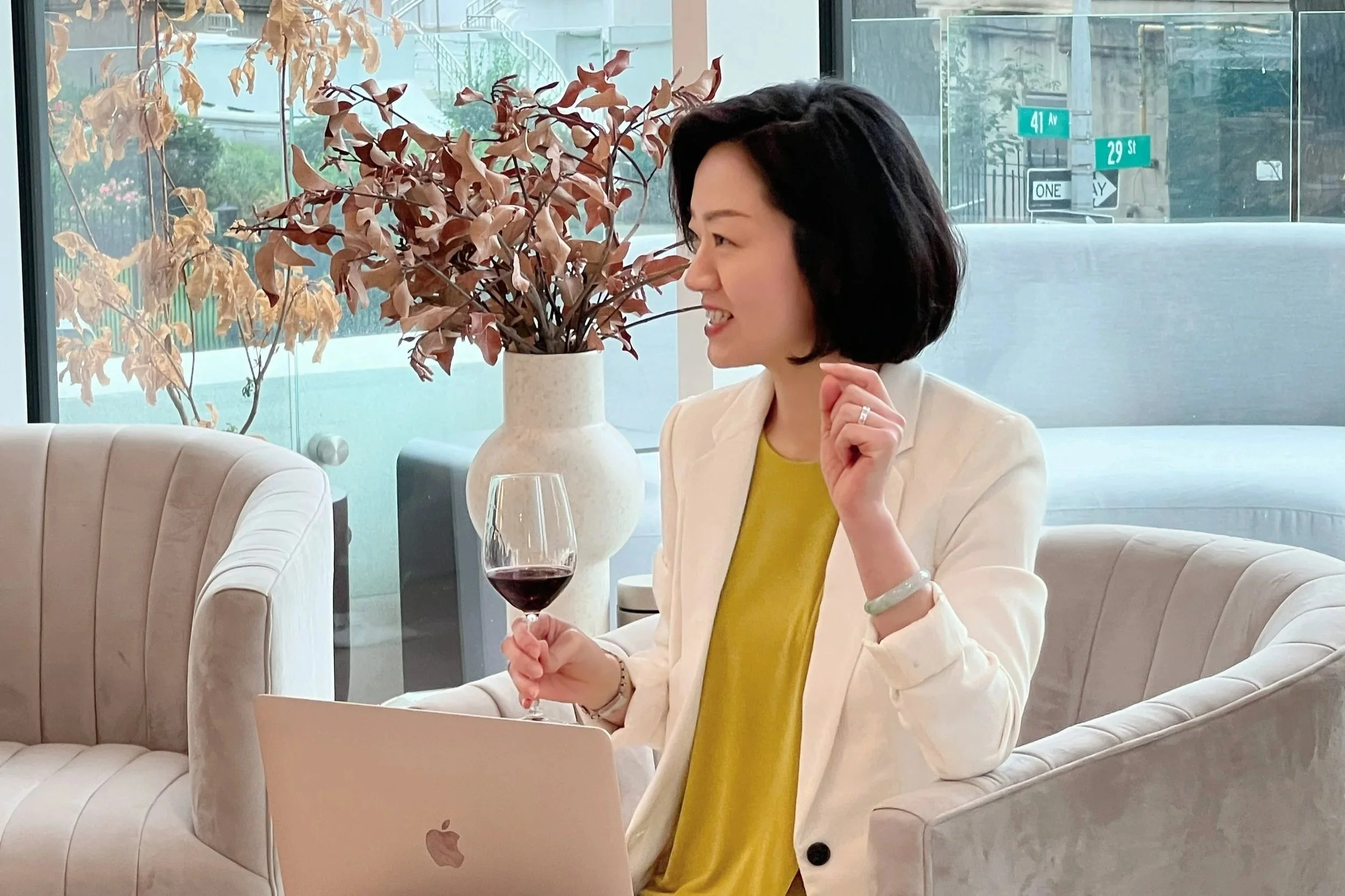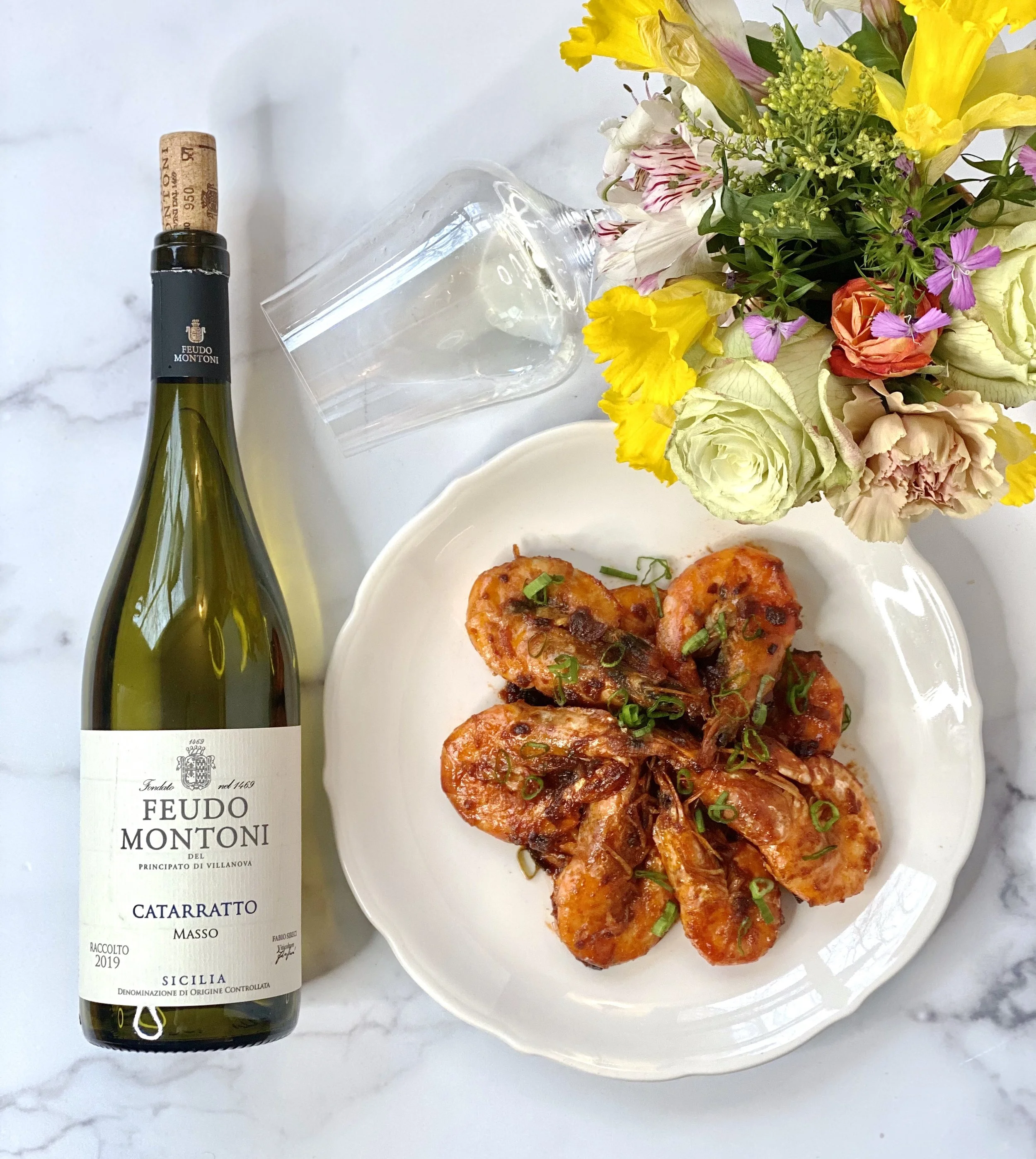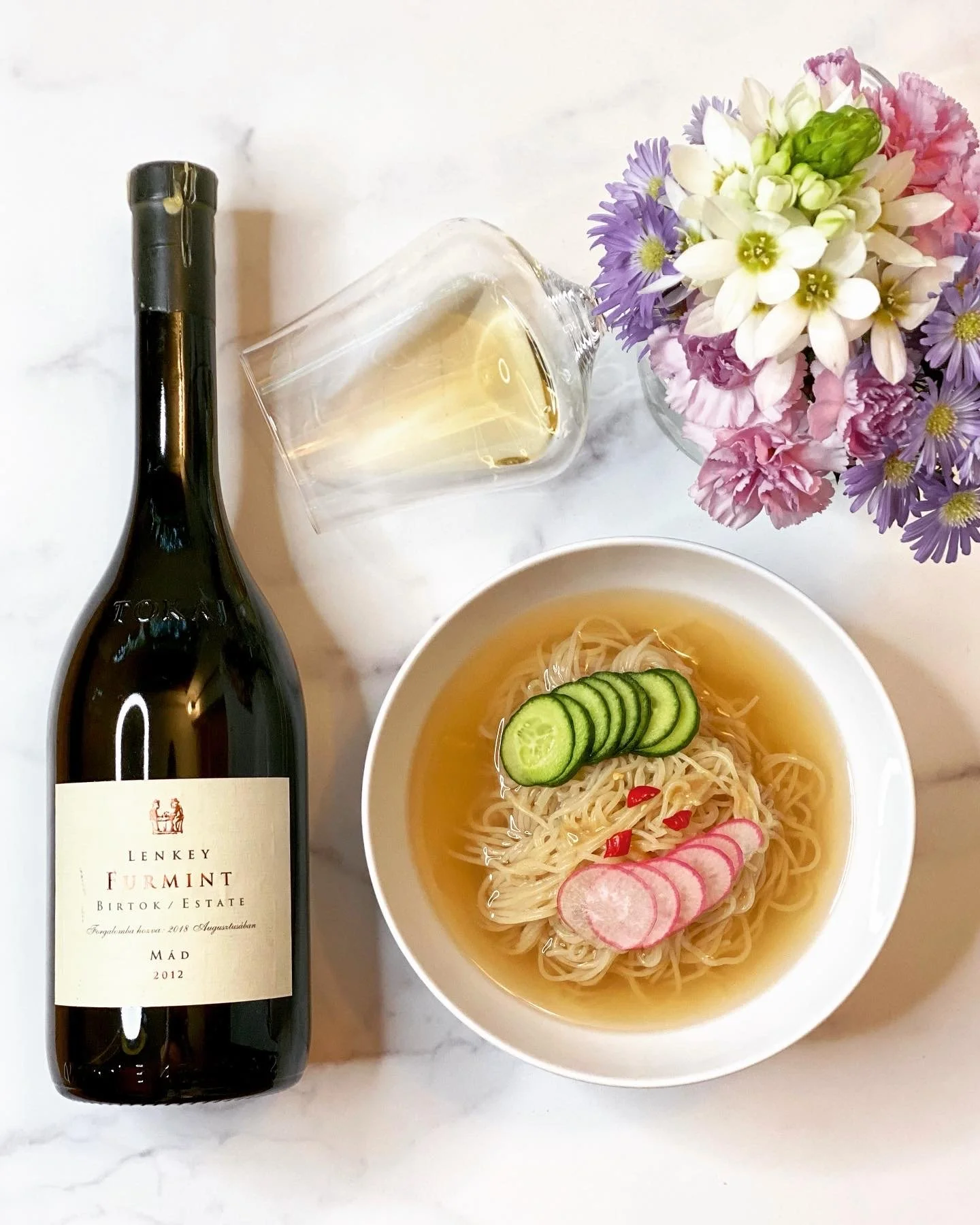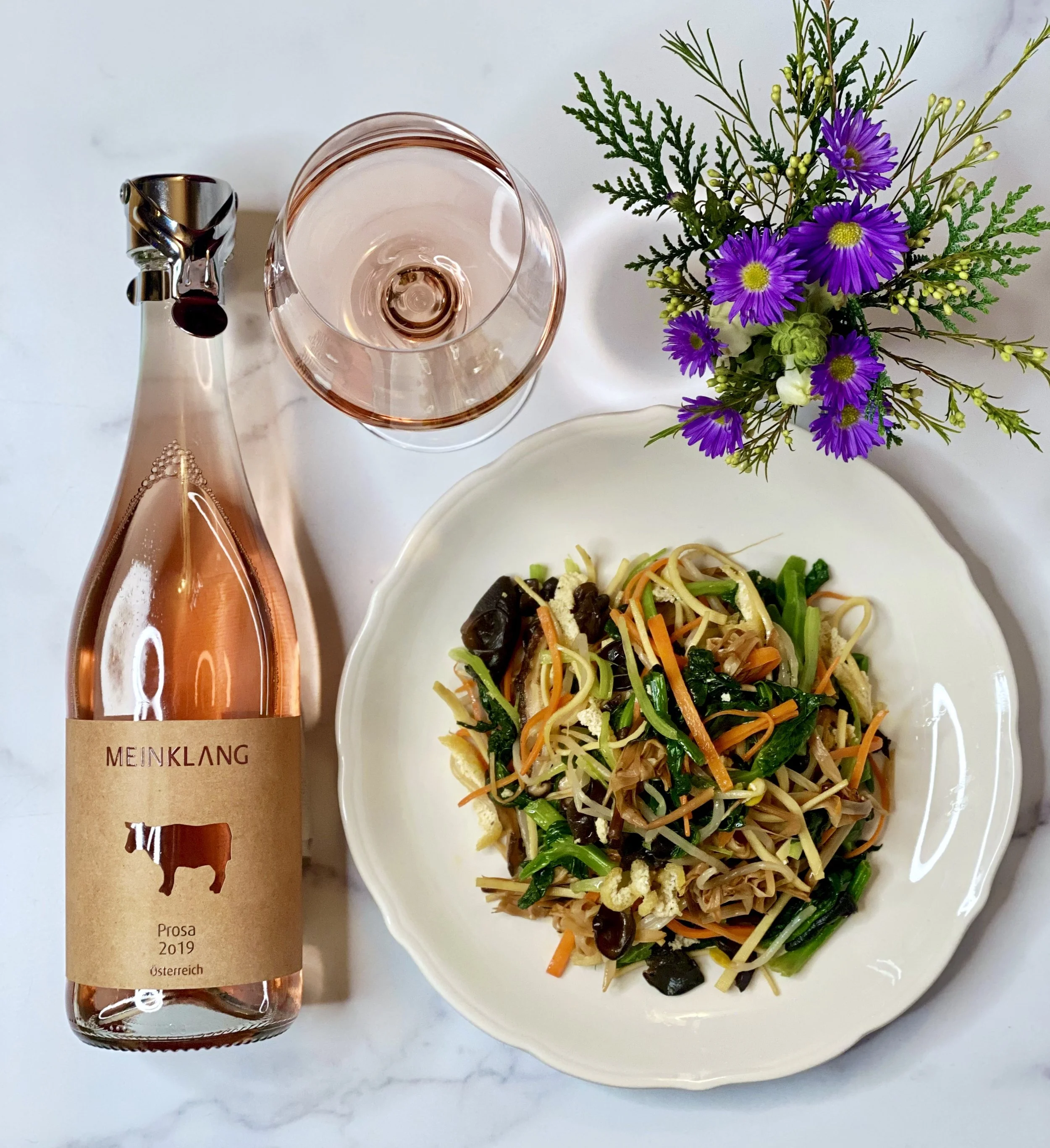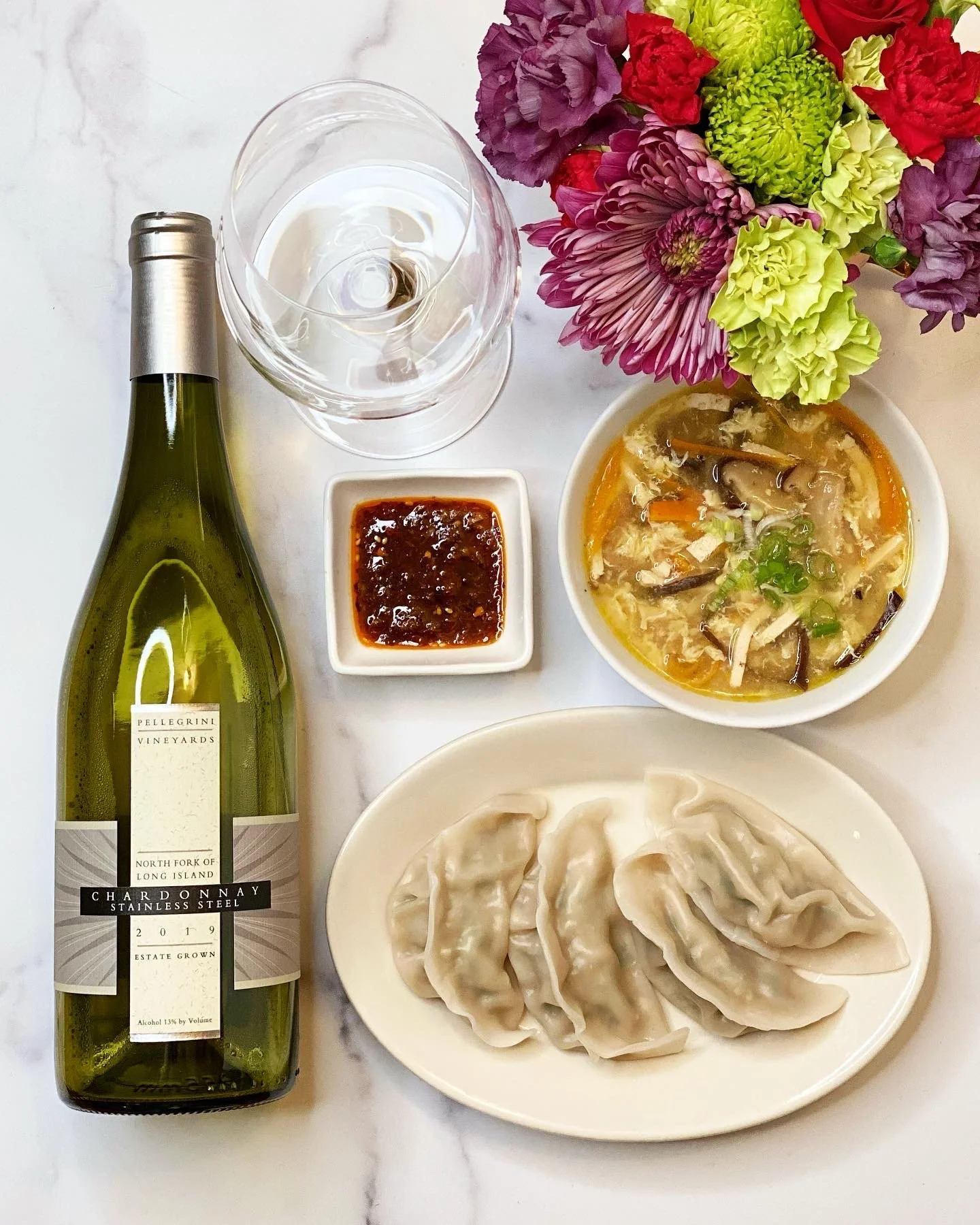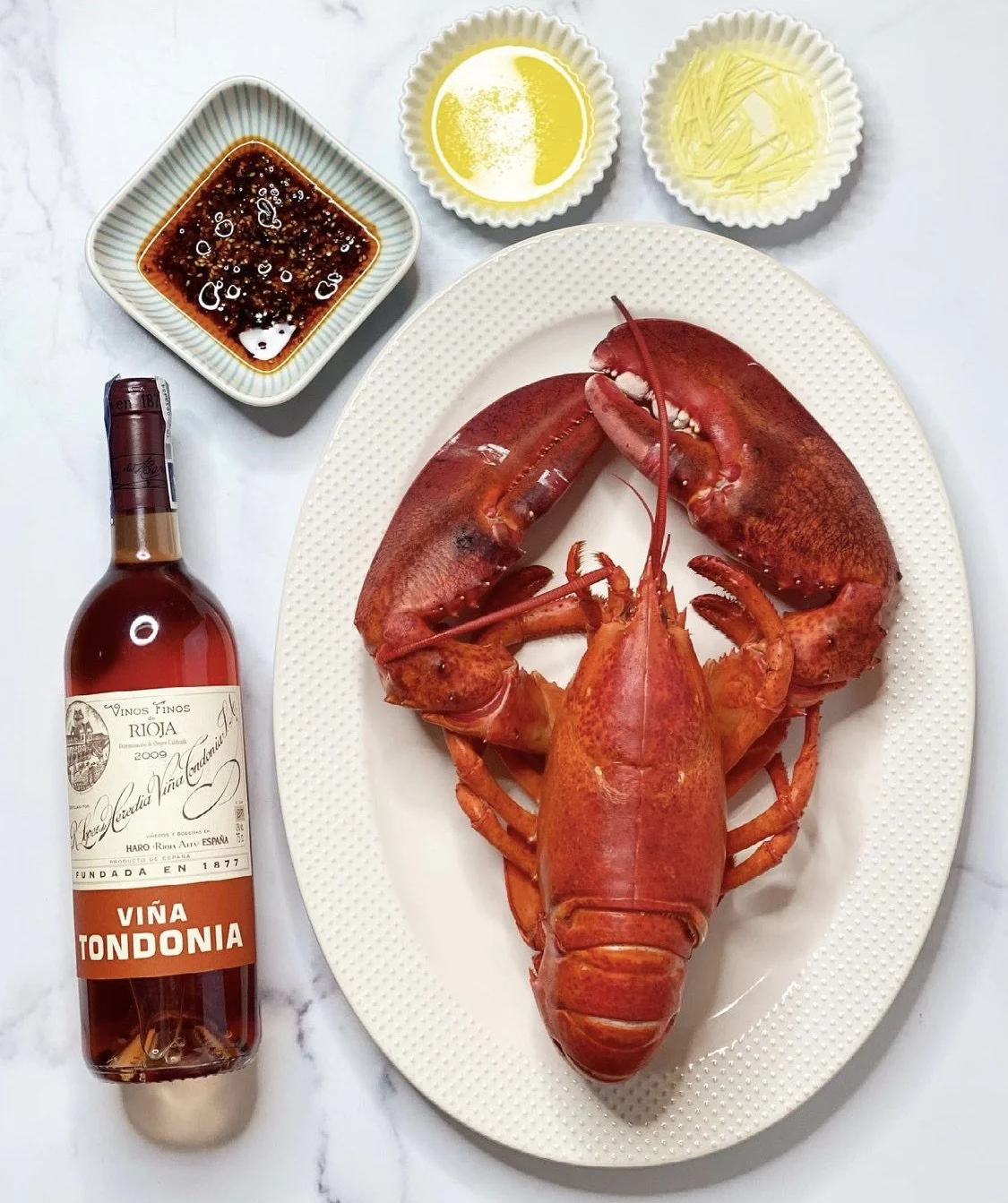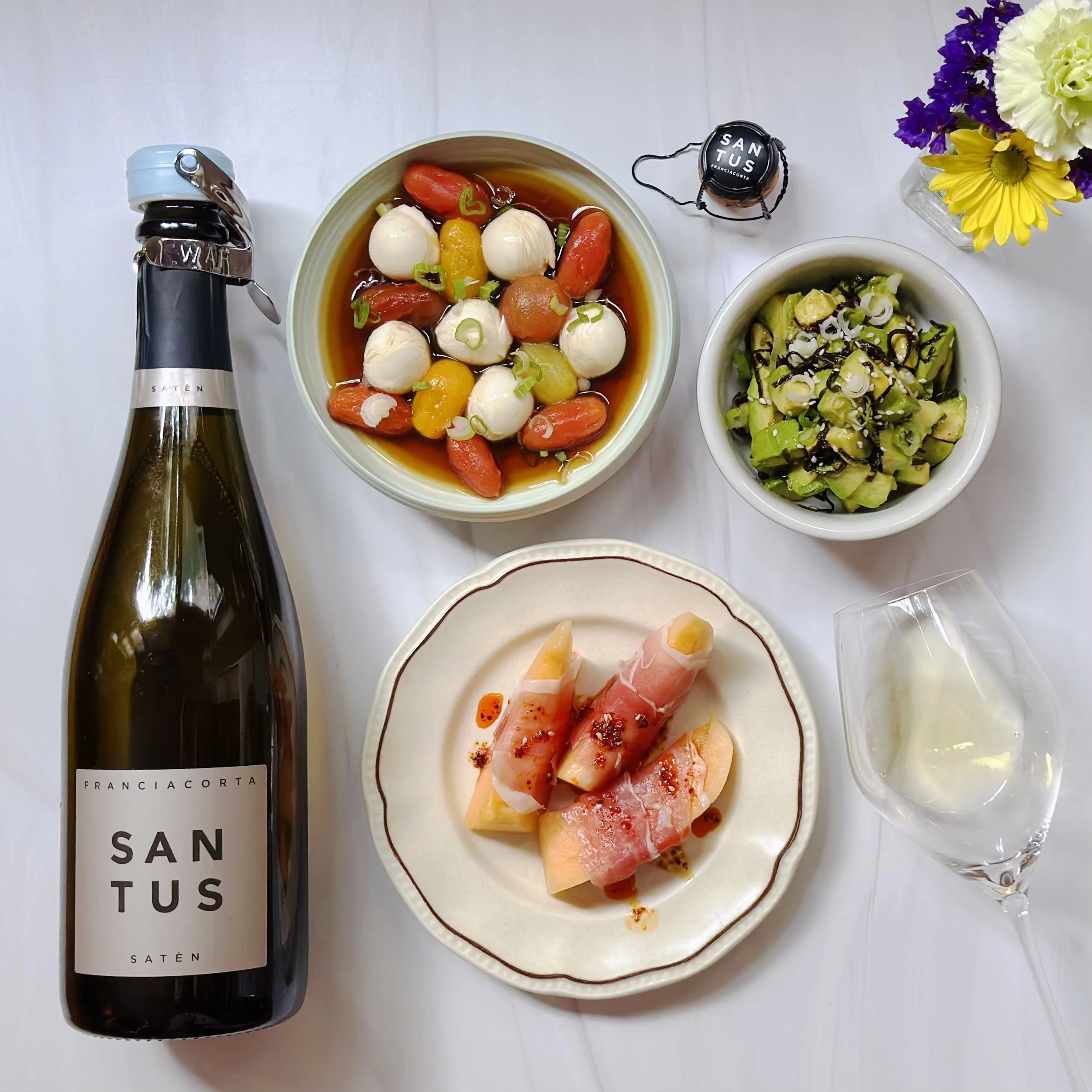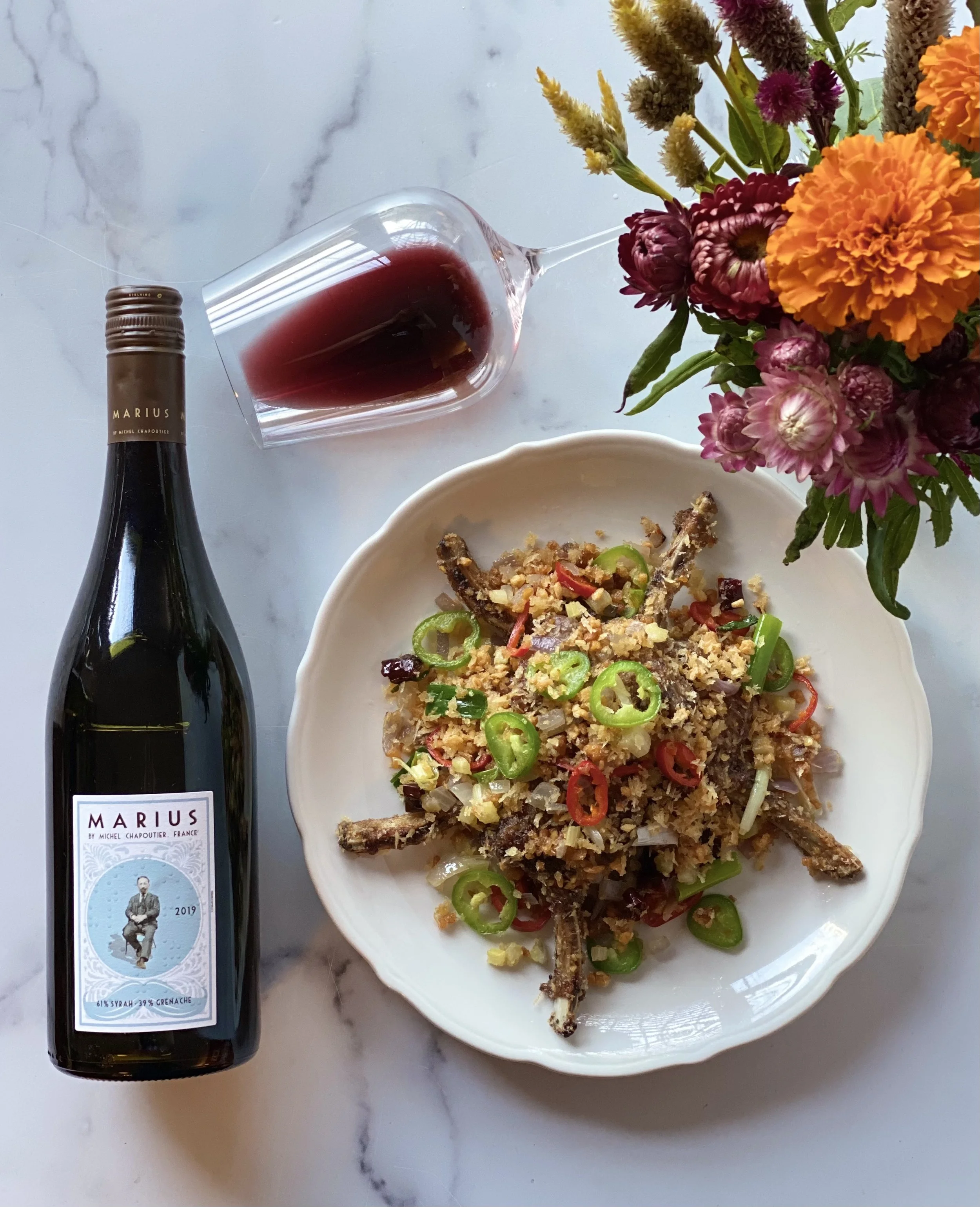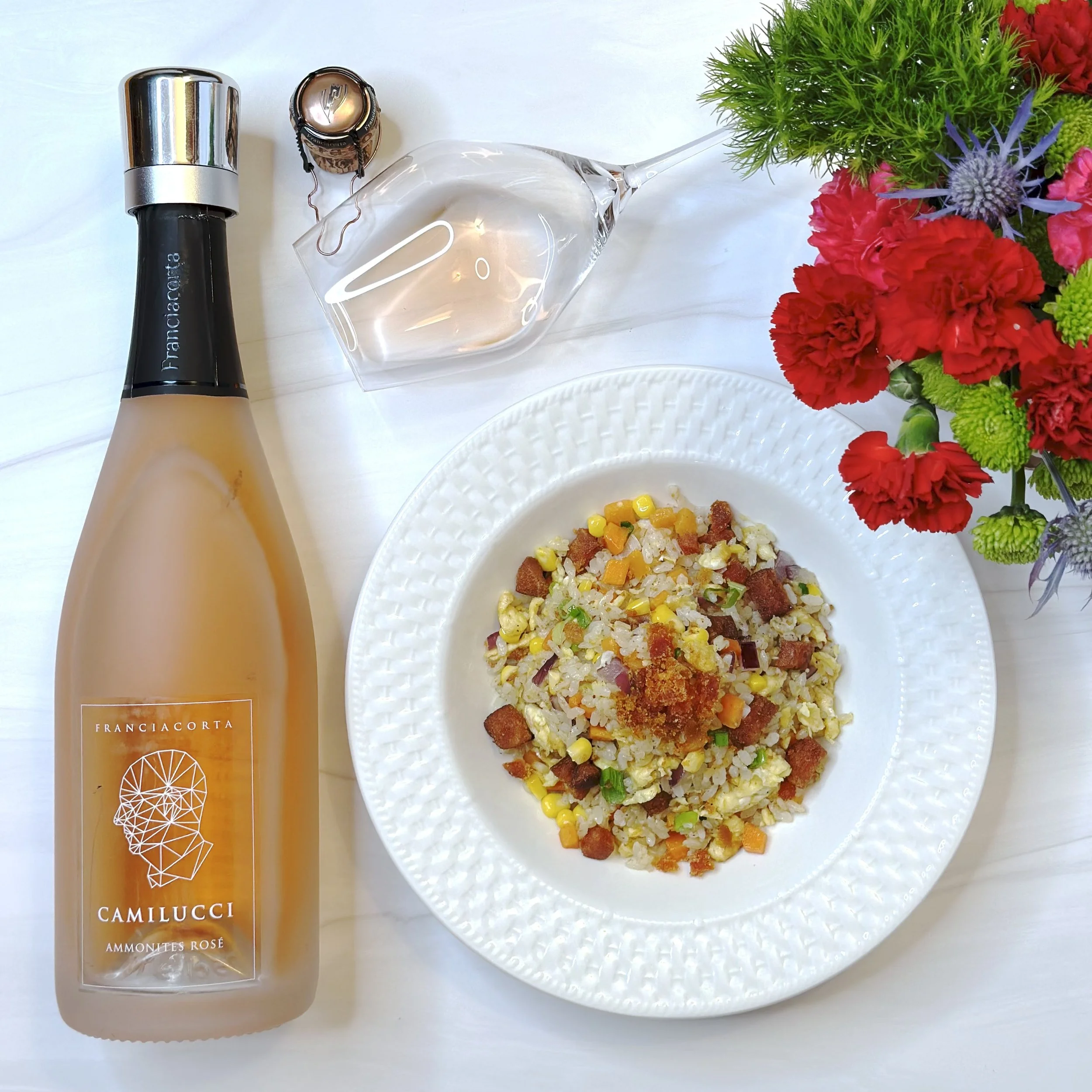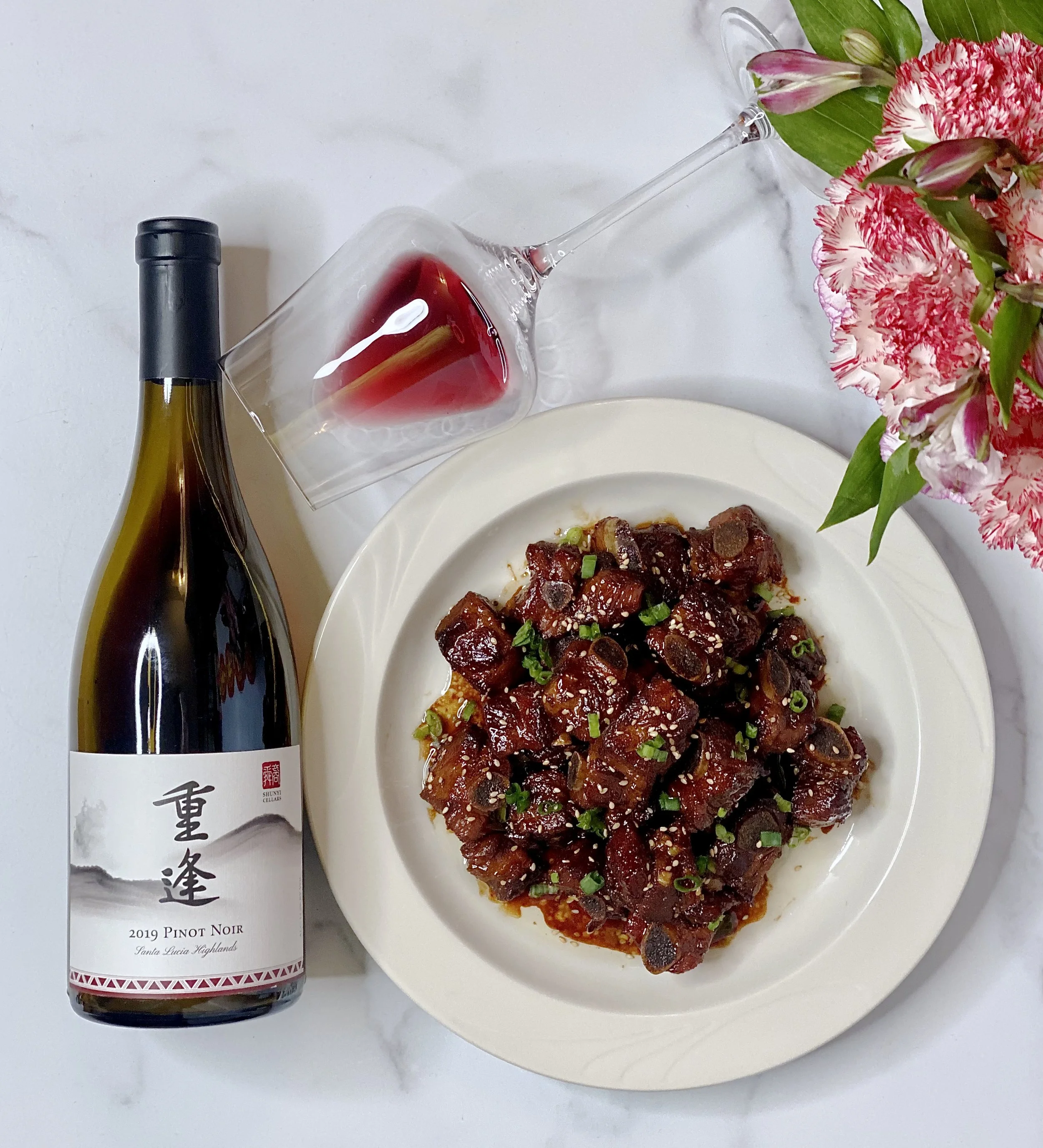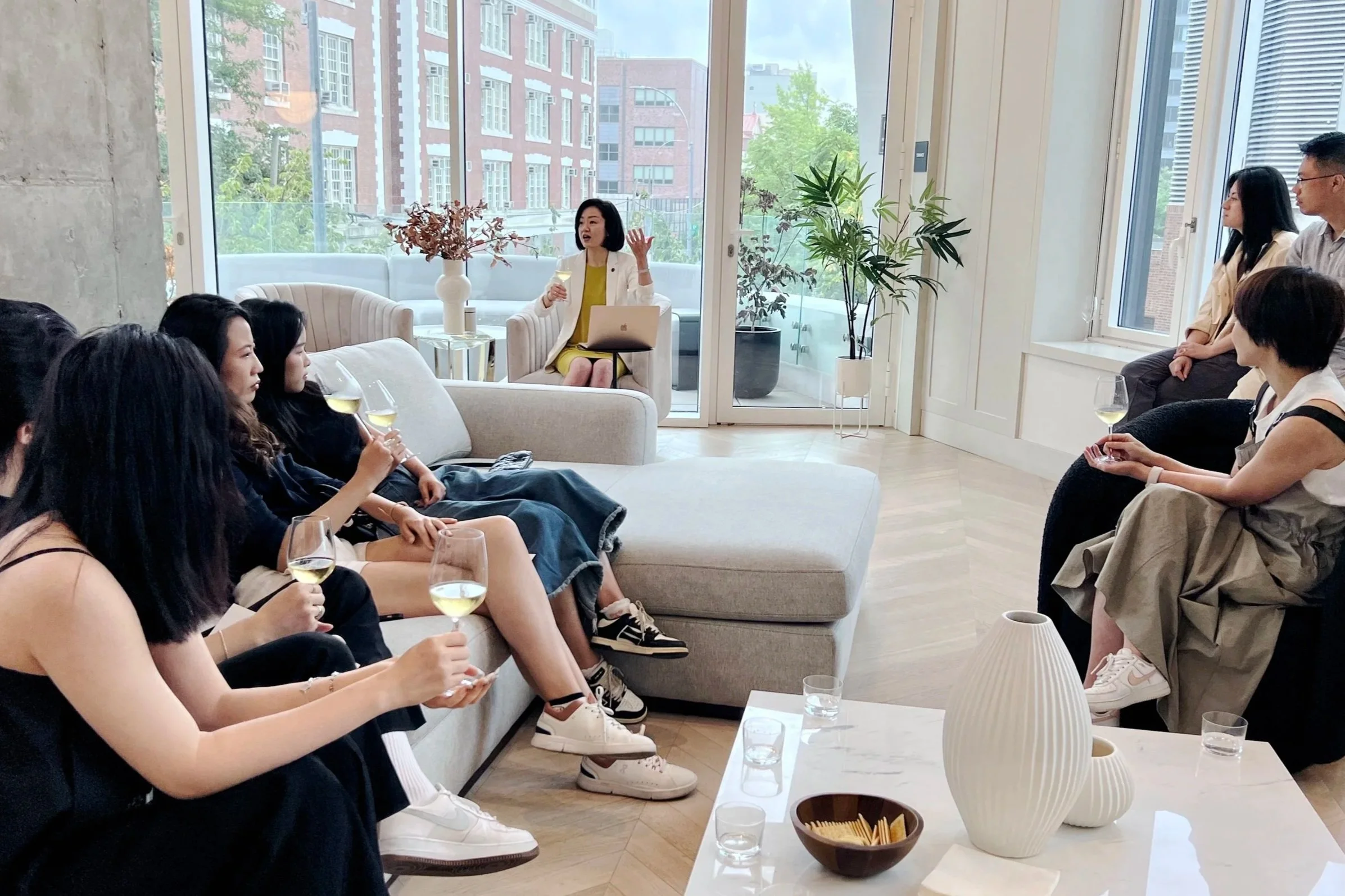More Than a Glass: Joyce Lin on Pairing Wine with Meaning
An Asian sommelier reimagines wine through storytelling, culture, and the quiet joy of connection.
In a world where wine is often wrapped in exclusivity and mystique, Joyce Lin offers something radically refreshing to the table: warmth, approachability, and a genuine respect for the everyday joy of tasting. As a certified sommelier, wine writer, and founder of 酒意思 SIP WITH JOYCE, Joyce’s approach to wine is rooted not only in professional rigor but also in cultural curiosity and human connection.
Before entering the wine industry, Joyce spent over a decade in the art world, holding a Master’s in Art Management and having a background in Fine Arts. Her interest in wine grew after moving to the U.S., where the culture of drinking felt simultaneously overwhelming and enchanting.
“My journey didn’t start with a glass — it started with a question: What am I tasting, and why does it move me?”
What began as curiosity turned into a calling. After earning her certification with the Court of Master Sommeliers in 2015, Joyce transitioned fully into the wine industry — from retail to writing, teaching, consulting, and working as an on-floor sommelier.
She first worked in wine retail, then began writing for publications like Trink Magazine and Grape Collective, sharing pairing ideas and reflections on social media. Over time, her voice found its way into Wine Enthusiast, The Somm Journal, VinePair, SevenFifty Daily, and even NBC News—each platform offering a new way to explore how wine connects with life.
酒意思 SIP WITH JOYCE is a bilingual platform offering wine writing, food pairings, tasting events, and educational content, aiming to make wine culture more inclusive and intuitive.
For Joyce, hospitality is about empathy, not performance.
“Most guests aren’t here for a wine class,” she says. “They’re here for connection.” She applies this philosophy to every table she serves and every reader she writes for.
A Wine That Mirrors the Self
Her personal connection to wine goes beyond just her profession — it’s her identity, too.
Asked to describe her personality as a bottle of wine, Joyce smiles and says: “Gevrey-Chambertin.” Known for producing structured, soulful Pinot Noirs, the Burgundy appellation embodies quiet complexity.
“It doesn’t shout or sparkle. It speaks slowly, but with purpose.”
“Gevrey-Chambertin isn’t the obvious choice. But like me, it opens up over time — reserved at first, then layered, honest, and lasting.”
The comparison shows not only her self-awareness but also her appreciation for wines that reward attention, not just recognition.
“Like a fine Burgundy, I unfold over time — not flashy, but full of depth, soul, and purpose.”
This profound complexity also shapes Joyce’s view on how wine can coexist with culture — especially when it comes to pairing.
Tasting Across Cultures
One of her main goals is to challenge the long-held belief that wine can only pair with Western Cuisine. She believes Western wines and Asian flavors are not in opposition, but in conversation.
“Yes — wine can pair with soy sauce, spice, and fermentation. We just have to be curious enough to try.”
From Riesling with Sichuan chili to Taiwanese Beef Noodle Soup with Rioja, these unexpected combinations don’t just complement — they elevate.
“Asian cuisines have texture, umami, spice — they’re incredibly dynamic. Wine can enhance those elements when chosen thoughtfully.”
As one of the few Asian women in New York’s wine scene, Joyce also recognizes cultural gaps.
“Sometimes wine education feels like learning someone else’s language, but through storytelling and pairing, we can make the conversation more inclusive.” she notes.
Despite the elegance often associated with wine service, Joyce gets candid about the realities of her work.
“People picture sommeliers living in a world of candlelight and rare vintages. And yes, those moments happen. But behind the scenes, it’s a service job that demands stamina, empathy, and ongoing learning.”
Still, she finds magic in the smallest moments — the sparkle in guests’ eyes when a pairing hits just right, or the comfort in guiding a hesitant guest toward something they end up loving.
Over time, Joyce has also observed a more profound shift in the world of fine dining — a quiet revolution in how wine is selected and served. More restaurants are moving away from critic scores and legacy labels, opting instead for natural or low-intervention wines that align with the kitchen’s values.
“When a restaurant selects these wines, it’s not solely about flavors — it’s about their philosophy. These wines reflect the same ethos as the cuisine: local, seasonal, expressive.”
She views this evolution as a new opportunity for sommeliers to engage.
“We’re not just listing vintages — we’re inviting people into a sensory conversation.”
Climate change is now impacting both the winemaking process and the way people consume wine. While many producers adapt through earlier harvests, canopy management, or seeking cooler vineyard sites, Joyce notes a shift among consumers as well.
“Younger generations are gravitating toward wines that are lighter, lower in alcohol, and easier to enjoy. It’s not just a health choice — it’s about finding joy. People want wines that reflect how they live today: fluid, open-minded, curious.”
For Joyce, this signifies a positive step forward. “Wine should reflect our values, our pace, our relationships. It’s not meant to be static — it should grow with us.”
The Meaning Behind Each Sip
This philosophy also influences how Joyce teaches. For her, being an excellent taster isn’t about innate talent but rather about noticing the aromas and flavors we often overlook in everyday life.
“Your palate is a muscle. And the world is your training ground.”
Training your palate isn’t limited to just tasting from a glass. One tool she often recommends is an aroma kit — it contains concentrated scent compounds that help improve memory and accuracy in recognizing aromas. But even without specialized tools, everyday experiences are the best way to train.
“When you peel an orange, brew coffee, or walk past a flower stand — notice it, name it, and store it in your memory. That’s how you sharpen your senses.”
As an educator, she believes that great tasting begins with familiarity.
“It’s not about copying a textbook,” she explains. “It’s about connecting a flavor to a feeling, a memory, or a culture you understand.”
This is why she often advises students to refer to their food heritage.
“If you grew up using sesame oil, tamarind, or rice vinegar, those are part of your flavor library. Use it. Wine doesn’t exist outside your life — it lives inside it.”
The name 酒意思 (a play on “Joyce” and “the meaning of wine”) reflects that belief. Wine, she says, isn’t reserved for special occasions. It’s part of everyday joy, rhythm, and reflection.
“A glass of wine can be more than a drink — it can be a pause, a conversation, a memory in the making.”
Through writing, pairing, and education, Joyce encourages everyone to see wine not as a performance, but as a form of presence — an act of care, curiosity, and celebration, one sip at a time.
Website: www.sipwithjoyce.com
Facebook: @sipwithjoyce
Instagram: @joyce_foodnwine
YouTube: 酒意思 SIP WITH JOYCE

